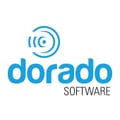Discovery generally requires admin level credentials in order to fully manage a device. This article describes the most common discovery protocols needed and level of support for each.
Example discovery video:
Most standard discovery will requires ICMP, SNMP and CLI Protocol capabilities:
Ping capable devices - For device that respond to ping request
- Uses ICMP (default = Yes in discovery profile settings )
- Only requires a ping-able target
- The discovered Object is saved a an IP address object in inventory
- The icmp monitor will be active against this target and
- The Network status column will be updated from ICMP monitor result
- NOTE: you may need to check the Discovery Profile option for "Manage ICMP only" devices
SNMP devices - For devices that support SNMP V2/V3
- Can also use ICMP - if the device does not support PING, then, "ICMP Ping Device(s)" must not be checked in the discovery profile. If checked and ping fails, discovery will not continue to test the remaining management protocols and credentials.
- SNMP V2 community or V3 credential must be configured on the target.
- After ping, the SNMP sysobjectID is read to determine the model and vendor for the device.
- With not other protocols, all SNMP related features will be supported, These include:
- SNMP traps, alarm and Events
- Direct access to device mib tree
- SNMP interface monitor for ports and interfaces
- Monitor related automation and processing rules are supported
- Topology and visualization maps to the degree that that standard mibs are supported by the device
- Feature unrelated to SNMP but still supported
- Syslogs may still be received
- Traffic flow data may still be received
- Reports
- Scheduling
Network device CLI - For device that have a Command line interface
- Uses Telnet or SSH /SSHv2 protocol.(Root or admin credential required)
- In addition to ICMP and SNMP management interfaces, a CLI interface provide these additional feature capabilities:
- Direct Access to CLI /terminal session
- Ability to execute CLI based action scripts to show info or configure a target
- Ability to perform backup and restore of configuration files
- Ability to deploy firmware
- Compliance scanning of cfg files from the output of a "show" cli command (Action script)
- Automation and processing rules that can call CLI actions
- Feature unrelated to CLI but still supported
- Syslogs may still be received
- Traffic flow data may still be received
- Reports
- Scheduling
- Protocol http/https
- Add protocol discovery time - Web credential are not validated so none are needed
- Feature provided is ability to use Direct Access -> Http/Http to invoke the devices web UI
Servers - For OOB or BMC like IDRAC, XCC,ILO,CMC
- Uses Redfish protocol. (Admin Credentials required)
- Features supported included BMC performance monitoring
- Depending on device, server configuration backup/restore
- Firmware deployment
- Can also add CLI in the discovery profile for CLI access to BMC (Like RACADM)
- BMC SNMP is supported and is optional
- Features supported are the same as CLI interface
- Can also add HTTP or HTTPs protocol to access the native web UI
Operating systems - For Windows, Linux based OS's
- Protocols - WBEM (Linux, ESX ), WMI (Windows). OS admin credentials are required.
- Optional SNMP is also supported from these devices
- Optional CLI interface SSH can be added for Linux. This provides ability to:
- Use Direct Access -> terminal to access the CLI
- Use CLI Action scripts for linux (Ansible, EsxCLi, PowerCLI)
- Windows WMI devices will also these capabilities
- Powershell remoting with Powershell actions (requires device to be enabled for Powershell remoting)
- Perform WQL queries via Actions
- Monitors supported
- Monitors (Default WMI monitor or WBEM monitor)
- Monitors (Default WMI monitor or WBEM monitor)
Telnet or ssh to the device you want discover to verify
Login to box
Example
User: admin
Password: ********
EnableID: enable
Enable Password: ********
If you don't have an enable password you would leave the authentication for enableID and password blank when you set up your discovery profile.
SNMP has 3 settings that need to be setup on the box.
snmp-community
